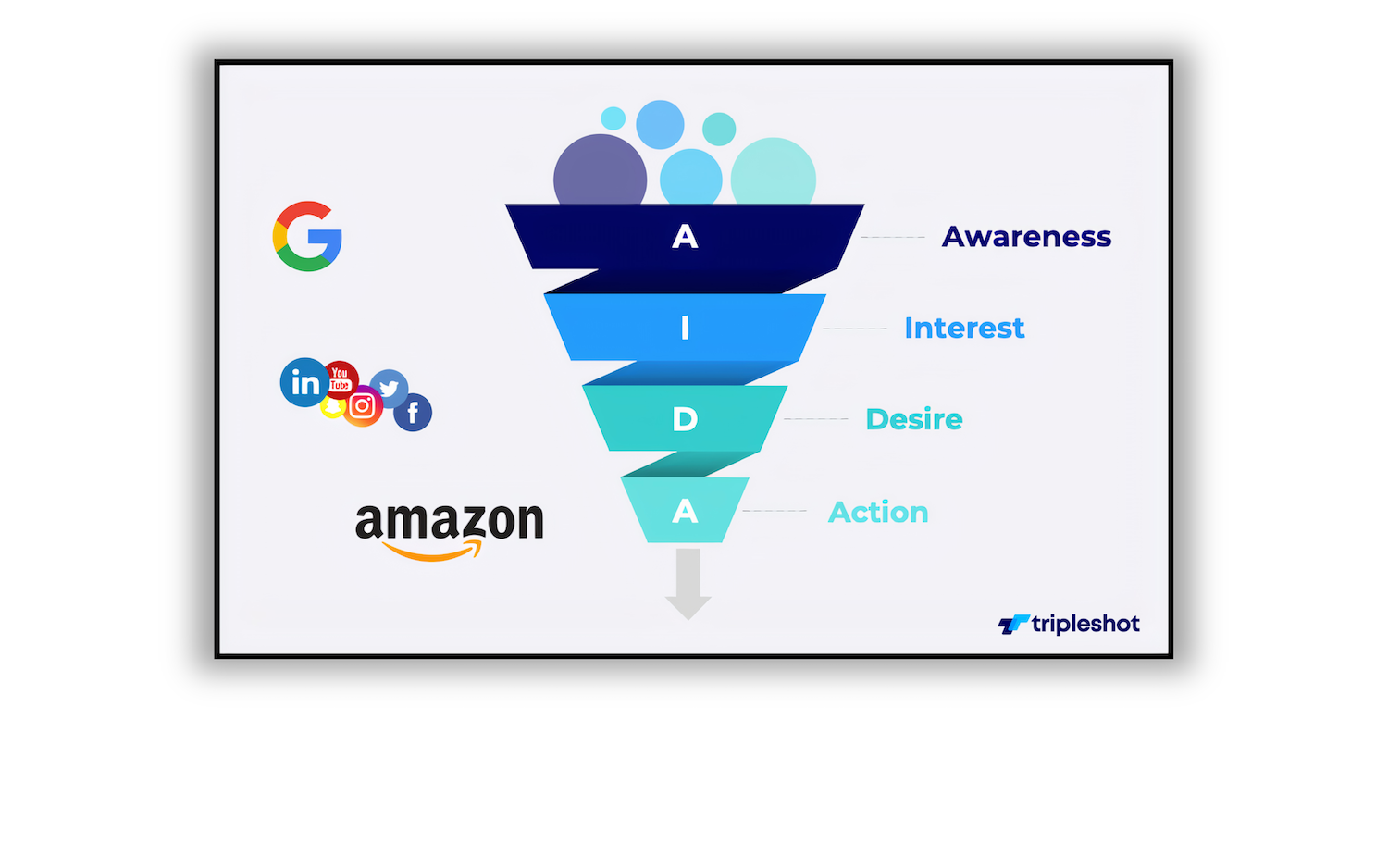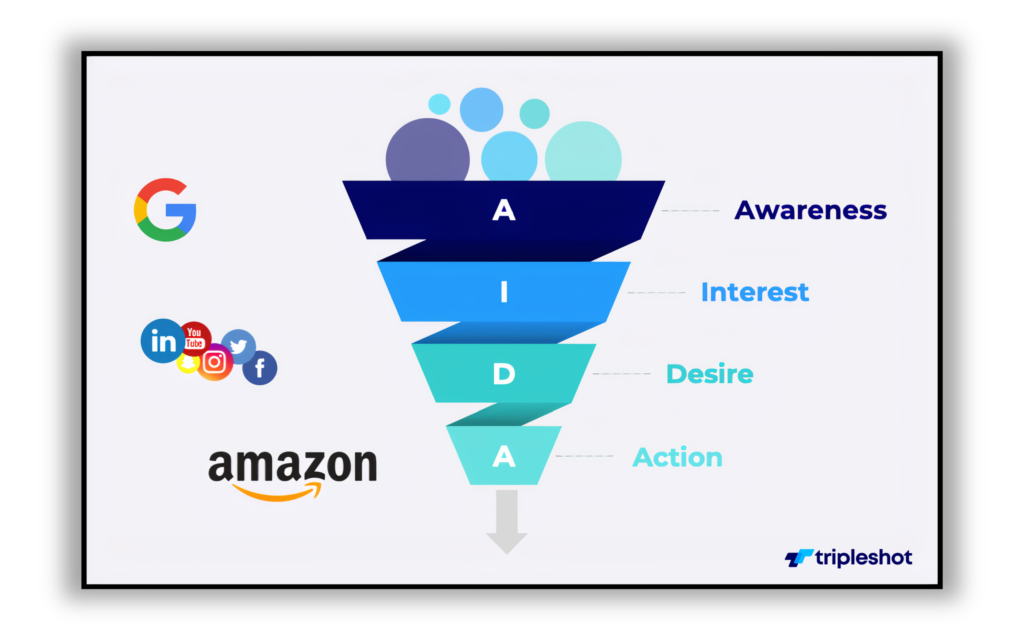E-commerce Conversion Funnel: The Path From Awareness to Purchase
Feb 08, 20235 min read Nick Heethuis


The e-commerce industry is growing at an astonishing rate, with more and more consumers turning to online shopping for convenience and a wider selection of products. As a result, understanding the customer journey from the moment they become aware of a product to when they make a purchase is crucial for businesses that want to succeed in e-commerce.
This journey is known as the e-commerce conversion funnel.
The e-commerce conversion funnel is based on the AIDA (Awareness, Interest, Desire, Action) framework, which outlines customers’ stages when purchasing. This article will examine each step of the funnel in detail, including how businesses can optimize their strategies to maximize conversions.
Awareness
The Awareness stage is the top of the funnel, where customers first become aware of a product or brand. At this stage, customers have a minimal understanding of the product and a low engagement level. The goal of the Awareness stage is to make customers aware of the product and start building a relationship with them.
Google is the most common point of contact for customers in the Awareness stage. Customers use search engines to find information about products they’re interested in, so it’s essential for businesses to invest in search engine optimization (SEO) strategies to ensure their products appear at the top of relevant search results. This can be done through keyword research and optimization, link building, and creating high-quality, informative content that provides value to customers.


Interest and Desire
Once customers have become aware of a product, they move on to the Interest and Desire stages of the funnel. In these stages, customers start to engage more deeply with the product, researching it in more detail and forming opinions about it. These stages aim to build interest and desire for the product and create a strong connection with the customer.
Social media platforms such as Facebook, Instagram, and YouTube, as well as blogs and other information sites, play a vital role in the Interest and Desire stages. Customers often turn to these sources to learn more about a product, see it in action, and get recommendations from friends and influencers. As such, businesses must prioritize their brand presence on social media and create engaging, shareable content that showcases their products and differentiates them from their competitors.
Another way to build Interest and Desire is through email marketing. By collecting email addresses from customers engaged with your brand, you can send them personalized, targeted messages that showcase your products and highlight the unique features and benefits that set them apart from others. Email marketing can offer special promotions and discounts to encourage customers to move further down the funnel.
Action
Finally, customers reach the Action stage, where they are ready to purchase. At this point, customers have decided whether or not they want to buy the product and are looking for the most convenient and secure way to do so. The goal of the Action stage is to make the purchase process as easy and seamless as possible and turn the customer into a loyal repeat buyer.
This is where Amazon comes in. Amazon is the most valuable platform for consumer brands because that’s where shoppers overwhelmingly go when they are ready to make a purchase. According to a recent survey, 61% of customers start their product searches on Amazon, and almost 90% of those searches result in a purchase.
Therefore, businesses must prioritize their brand presence on Amazon and make sure their products are easy to find, well-presented, and competitively priced. This can be done by combining optimization strategies, such as using keywords in product titles and descriptions, providing high-quality product images and videos, and leveraging Amazon’s advertising and fulfillment services to reach a wider audience and improve the customer experience.
Businesses should also focus on post-purchase customer support to ensure customer satisfaction and encourage repeat business. This can be done through effective communication, quick and easy returns and exchanges, and offering warranties or guarantees.
Conclusion
In conclusion, the e-commerce conversion funnel is a critical tool for businesses looking to succeed in the e-commerce space. By understanding each stage of the funnel and optimizing their strategies accordingly, businesses can increase conversions, build strong customer relationships, and achieve long-term success.
From awareness to action, the e-commerce conversion funnel provides a roadmap for businesses to follow as they work to engage customers, build interest and desire, and ultimately drive sales. By prioritizing their brand presence on platforms like Google, social media, email, and Amazon, businesses can reach customers at every stage of the funnel and create a seamless, enjoyable customer experience that leads to increased conversions and revenue.
At TripleShot, we provide expert assistance in launching, growing, and scaling brands on Amazon. Both established and emerging brands benefit from our services.
Amazon Product Title Tips: Tactics and Tricks for Unbeatable Product Listings
Aug 25, 202310 min read
Adding Video to Amazon Product Listings: Enhancing Sales with Visual Engagement
Aug 17, 202313 min read











